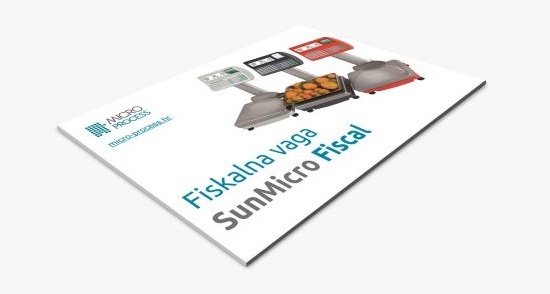MICRO PROCESS is a B2B company with 30 years experience in the business of custom software development and industry automation.
Company owner, Mr. Zoran Spoja, hired Logit to create a professionally looking, content-rich B2B website so that his company could start promoting new products.
We've built MICRO PROCESS' website using our proven Content First approach to website development:
- Website planning, which included creating digital marketing strategy
- Writing website content from scratch (using our B2B Website Content Guide)
- Website development and design, which included our Google Analytics First-Time Setup service
The above services are part of our Complete Digital Marketing Management package, ideal for companies who want to let professionals do all the hard work.
Results And Successes
- The website started generating new leads immediately, the same week we launched it.
- Mr. Spoja spent only 20 hours on content. His decision to let Logit do everything freed him from spending 100+ hours on creating content.
- Once Logit finished writing all the content, we designed, developed, and launched the website in only 1 month, just in time for Mr. Spoja's important sales presentation.
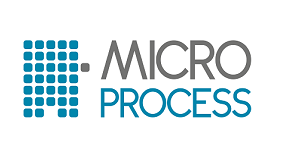
Company Name:
MICRO PROCESS d.o.o.
Website:
Industry:
Custom software development; industry automation
About the Client:
MICRO PROCESS is an experienced B2B company developing electronic cash registers, scales, industry automation solutions, and custom-tailored business software.
We wouldn't be able to create this kind of content by ourselves. We wouldn't know what to do and the energy we would spend on it would be enormous. You guided us through content creation and we’ve got results with minimal involvement.
Mr. Zoran Spoja, owner of MICRO PROCESS
Project In-Depth: a Proper Development Process Made the Client Happy and Successful
MICRO PROCESS is an experienced Croatian B2B company that has been developing business software and manufacturing electronic devices for 30 years.
Recently, the company developed new products and decided to sell them worldwide. Unfortunately, their old website was unable to serve their marketing and sales efforts well because:
- it was visually unpleasing
- its architecture could not support adding new products and serving new customer groups
- it wasn't built for generating new leads.
To find new international customers and business partners, MICRO PROCESS needed a completely new B2B website that would do 4 things well:
- inform and educate the visitors about what the company does,
- communicate MICRO PROCESS' quality and experience,
- support all MICRO PROCESS' marketing and sales activities, and
- bring in new customer inquiries.
In the beginning of the project, we had to come up with a solution to these challenges:
- A 30-year old company had complex products and diverse customers.
- There was almost no content available for building the website, and the existing content was mostly outdated.
- Our client was an extraordinarily busy man, but he was the only person available for content creation.
- Logit knew nothing about MICRO PROCESS' business.
We advised the client to take the strategic approach to developing his new website. This meant splitting the whole development process in 3 distinctive stages:
- Website planning
- Content creation
- Website development and design
This meant that we would not be starting the project by designing and programming the website.
Stage #1: Website Planning Saved Time, Money, and Frustration
Website planning should come before designers design a single page and before programmers write a single line of code. It's when digital marketing specialists work with the client on the following tasks, usually in that order:
- Defining business goals
- Creating client profile
- Creating marketing strategy
- Identifying current website flaws
- Creating website architecture, part of which is determining which content must be created to achieve the goals.
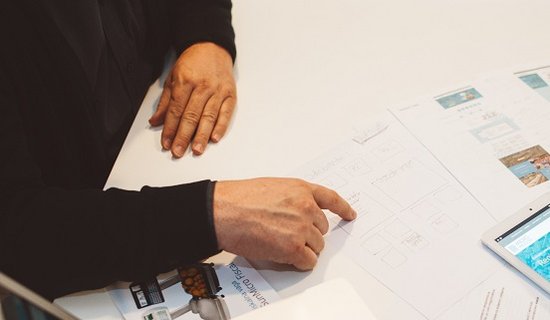 Creating mockups is part of website planning
Creating mockups is part of website planning
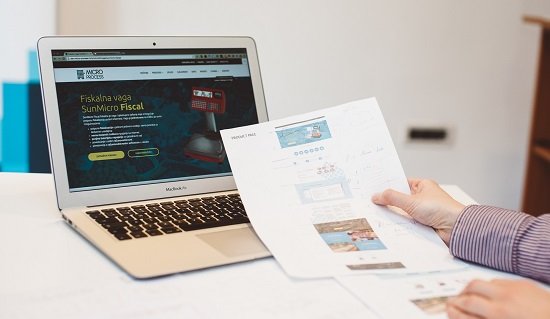 From a sketch to a finished website
From a sketch to a finished website
Approaching the project in this way helped us:
- focus on results, which means concentrating on attracting new customers for the client;
- define all the technical details upfront, which means there would be no delays during the project;
- better estimate the scope of the project, so that there would be no price increases for the client.
We proceeded to the next stage only after the client approved the architecture and the marketing strategy.
Stage #2: Writing Website Content Saved the Client 100+ Hours of Work
During the website planning stage, Logit made all important decisions about content, more specifically:
- which types of content to create:
- Should we create detailed customer case studies?
- Do we need a 'Support' page?
- in which formats to present that content:
- Should we make technical documentation available as a PDF download?
- What kind of photos are needed to better visually explain the product?
- how much of every content type to create
- How many product landing pages do we need?
- How much content is required to properly communicate our experience and quality?
Years of experience in website development taught us to use our ‘Content first’ approach to website development. This process saves our clients time, money, and frustration.
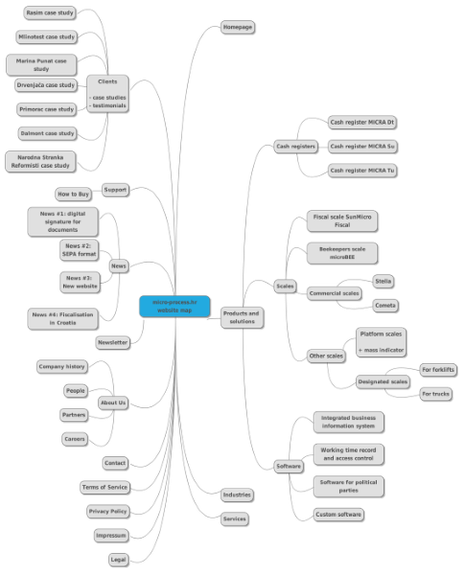 Website map of MICRO PROCESS' website
Website map of MICRO PROCESS' website
‘Content first’ means that content creation must precede website design and development. This approach makes sure that design is made to fit content, and not the other way around. Sooner or later there will be unexpected difficulties along the way.
For example, because most clients are busy, and website content is rarely their utmost priority, web developers often finish websites and wait for months or years for the client to fill the website with content.
And because websites can't be launched without content, lack of content causes delays in launching the website and loss of substantial revenue from potential new customers that the new website would otherwise attract.
MICRO PROCESS suffered from none of these challenges:
- Our client spent only about 20 hours on creating website content, 90% of which was spent being interviewed by our content creation team.
- Using our B2B Website Content Guide, we interviewed the client by asking specific questions that we knew his customers would ask while viewing the new website. We knew that a B2B website is successful when its content succeeds in answering direct questions with direct, complete, and honest answers.
- After completing 7 interview sessions, we took the audio recordings and transcribed them to raw digital content.
- The last step in the content writing process was putting our copywriting skills to good use and editing the content to perfection.
When we finished writing website content, we presented it to the client as digital documents (i.e. in Google Docs or Microsoft Word format). This way the client was able to quickly approve the content with almost no corrections.
Stage #3: Coding, Designing, and Launching a Website in Only 1 Month
It's easy to launch a website fast when there are zero uncertainties, and when clients trust you 100%. Building micro-process.hr was one of the least stressful projects we've ever worked on.
We began programming and designing the website as soon as the client approved the content. Launch day was about one month after that.
We designed the new website to create great user experience for the visitors and with lead generation in mind.
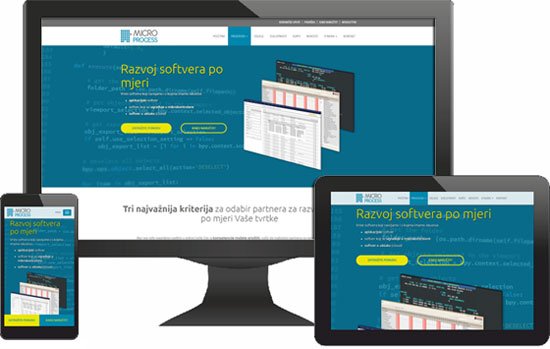 micro-process.hr looks great on mobile devices, too
micro-process.hr looks great on mobile devices, too
Responsive design + open-source CMS
Responsive means that the website looks awesome on mobile devices and all screen sizes.
We've built this website using Django CMS, Python, and Django.
Every page sells
The landing pages have been architected, written, and designed to convert visitors to customers. Thoughtfully placed call to action buttons draw visitors deeper into the website and toward making an inquiry.
Customer-friendly website
Product pages answer customers' most important questions, such as: How much does it cost? What level of support do I get? Can I trust this company?
Content optimized for online reading
We've laid out and designed the content so that visitors can easily skim the content to find the answers they're looking for, and skip parts of content to save time.
Setting Up Good Digital Marketing Foundations With Google Analytics
Just prior to launching the website, we've made sure our client's new website is collecting clean, accurate data about its visitors. The way we do this is by setting up and professionally configuring Google Analytics.
Google Analytics will help our client make smart and profitable decisions about their website and their marketing activities.
For example, we’ve configured their Google Analytics to track events such as button clicks and brochure downloads. Our client will be able to measure whether or not, and to what extent, those brochures contribute to customers making inquiries. If Google Analytics tells us that visitors download brochures, we can produce more of them, and make them even more visible on the page.
Creating Additional Literature Is Easier and Faster When There's Content
Our small team was able to work on building the website AND designing the brochure AND creating the presentation - simultaneously.
This would have been impossible without content and undoable without getting to know our client's business during the website planning and content creation stages. Our project manager made virtually all marketing decisions regarding the creation of additional marketing material, without bugging the client with a deluge of questions or requests for approvals.
Based on website content, we created a presentation for one of MICRO PROCESS' important new products. The client presented the product to a live audience.
 The client loved the brochure and the presentation we made
The client loved the brochure and the presentation we made
In cooperation with our partners from dDesign, we collaborated on designing an 8-page printed brochure.
Logit created the concept and repurposed the existing content for the brochure, while dDesign designed the brochure.
Download the Brochure(in Croatian, PDF, 1.56 MB, 8 pages)Do You Want to Be Free to Run Your Business While Professionals Work on Your Website?
Our estimate is that a typical company spends somewhere between 100 and 200 work hours of their key persons' time on developing a website, similar to micro-process.hr in scope.
No wonder website development projects take months, often years!
How much are 100-200 free work hours worth to you?
How much revenue are you losing for not launching your improved website sooner?
 Presenting the results of our work to the client
Presenting the results of our work to the client
 Our client, happy that he didn't have to do all this work by himself
Our client, happy that he didn't have to do all this work by himself
The key person, such as the CEO of a small company or the director of marketing, is usually required to be involved in every step of the process, doing all or some of the following:
- creating marketing strategy on their own
- creating project documentation
- drawing website maps
- deciding which content to write
- writing content on their own
- entering content into the website, using a content management system (CMS)
- approving stuff: design proposals, content, the way apps behave
- making decisions about web page layouts
- making or requesting corrections
The good news is: you can hire consultants to do most of this work. By letting professionals plan your website, create your marketing strategy, and write your content, you can reduce your own workload by 90%.
A no-so-strange thing happens when you order website planning and content creation services:
- The professionals you hire will get to know your company so well that they'll be able to make confident decisions about marketing, without asking you for every little detail.
- You'll be able to trust their decisions because they're an objective outsider, deciding with your business interests in mind. In situations where you're unable to see the forest for the trees, you'll love having an objective party around.
That's what MICRO PROCESS did: they hired Logit to manage their entire digital marketing project. The client was mostly free from website production work and could focus on supporting their customers, selling to new customers, and making their products better.
